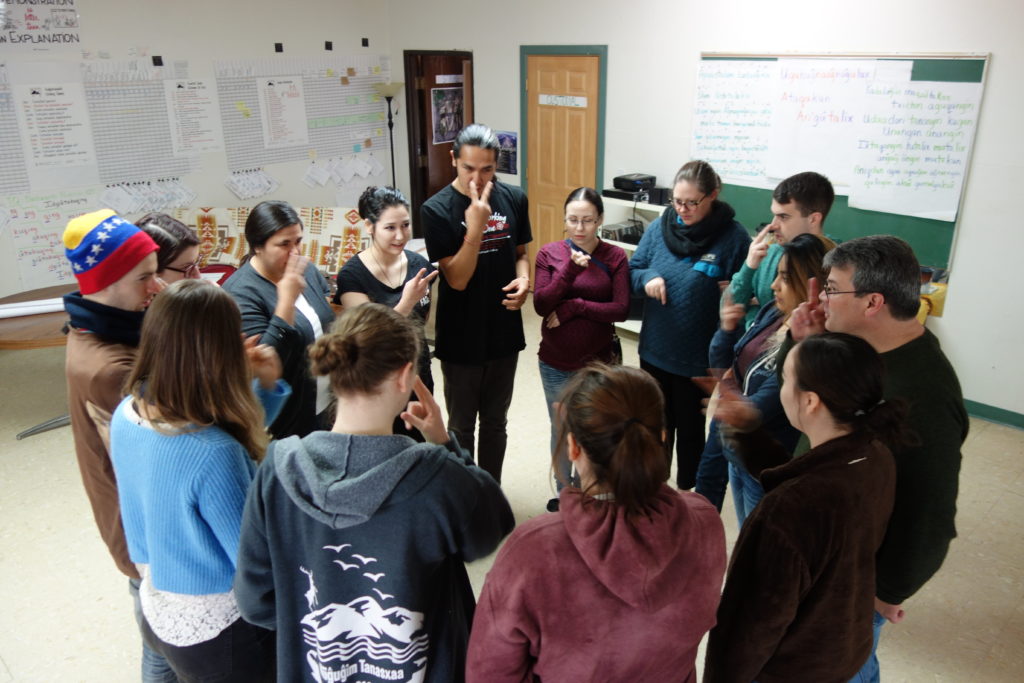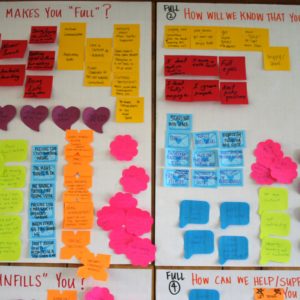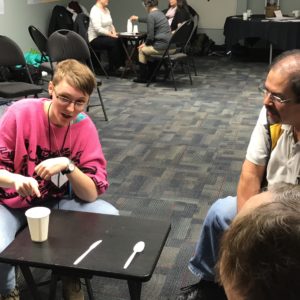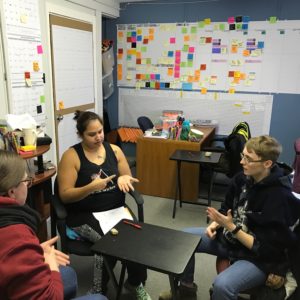 Have you ever watched a master teacher at work? As a student teacher walking into a master teacher’s classroom for the first time, it is easy to have the misconception that the students are magically doing what they are supposed to be doing. The truth is that the teacher is using techniques to seamlessly facilitate student response. Having the Where Are Your Keys? (WAYK) methodology under my belt when I was a teacher-in-training was a huge advantage to my learning. It helped me understand the fact that every master teacher’s classroom is run through techniques implemented by the teacher and not just run by “magic.”
Have you ever watched a master teacher at work? As a student teacher walking into a master teacher’s classroom for the first time, it is easy to have the misconception that the students are magically doing what they are supposed to be doing. The truth is that the teacher is using techniques to seamlessly facilitate student response. Having the Where Are Your Keys? (WAYK) methodology under my belt when I was a teacher-in-training was a huge advantage to my learning. It helped me understand the fact that every master teacher’s classroom is run through techniques implemented by the teacher and not just run by “magic.”
I remember reading a ‘ride card’ (a WAYK-style lesson plan for teaching language) for the first time. I examined the ride card, thinking to myself—how do I implement this? What components of this ride card do I understand, and what components do I need more help with? I quickly understood the content on the ride card but struggled with teaching from it. I took it upon myself to make a sequenced list of JUST the Techniques in the order I would use them when teaching that particular ‘ride’ (WAYK-style lesson). Soon I came to the interpretation that the content is what is in my head, or something I know, but the Techniques are what makes that content teachable. In other words, techniques are the organized outward expression which learners will see and respond to. I am also mostly introverted, so it is very important for me to emphasize the interpretation of techniques as outward expressions. Having a sequenced list of the Techniques I planned to use to teach a specific lesson turned my teaching abilities around tremendously.
Now, I was an elementary classroom teacher-in-training versus a language teacher—a whole different ball game. However, I am determined to continue to implement techniques in my elementary classroom. If I assess what I am working with first, it will tell me what techniques are required for me to do my job effectively in my current particular context. The first objective of my training is to sit back and observe the master teacher in the classroom. When observing the master teacher, I remember to watch for specific techniques already used in the classroom instead of assuming classroom functions are magically falling into place.
As an elementary teacher-in-training, I want to complement the techniques which are already practiced in the classroom. I am looking to effectively utilize the specific techniques the learners already know how to respond to. In order to learn how to use the existing techniques, I have to know how and why the techniques are used—for example, what desired learner response is created when the specific techniques are used?
Some strategies I use when looking for existing techniques in the classroom include actively looking for routines. Routines are loaded with hidden techniques that make transitions effective. For example, the desired response for lining up at the door is that students will only do so without talking, after all materials are put away and desks are cleared. In order to produce that response (more so in elementary classrooms), you have to have some techniques up your sleeve. The master teacher might use a combination of techniques such as model the expectation (WAYK Technique: Model). The students get to see how they are expected to behave, which sets students up to be successful in fulfilling the expectation. Modeling expectations will produce the desired student response, especially if the technique of modeling the expectation is practiced until the desired student response is consistent. Additional techniques may be required if the technique of modeling expectations does not suit or get all learners to respond as desired.
As a student teacher, I am must follow and reinforce an existing schedule with existing expectations, which means I need to make sure those expectations or desired student responses are met. Recall that, truthfully, expectations that are set are not met without the regular use of more hidden techniques. So what is another component of the classroom that I need to be aware of in order to ensure students respond as desired? For this example, let’s focus on the learning process versus classroom management. Well, another important set of hidden techniques I need to pick up on are techniques that will help me effectively facilitate learning and provide feedback on student progress. What kind of feedback does the master teacher give the students, and at what point in time during the day, activity, or lesson? Or more broadly, what is the master teacher’s process for providing feedback? I have learned that most master teachers begin providing feedback on student progress throughout the lesson.
Most master teachers use some sort of triangulation technique (like a learning situation where students have three chances, hence the triangle, to practice the new concept they are learning) for teaching new concepts. For example, first, a master teacher might model what the students will be doing in the lesson. A simple example of modeling a new learning process can be simply showing and narrating how to move blocks around to show 2 red blocks + 2 blue blocks = 4 blocks in all. Second, the master teacher might ask for student input in completing another problem such as intentionally making mistakes when demonstrating how to use blocks to show 3+3=6. The purpose of intentionally doing something wrong is to prompt student input to make corrections based off of the process modeled in the first problem. There’s a technique! The desired student response is a correction—so we can name the technique Fail Fast which is when you as the teacher set up a situation where you intentionally do something wrong, and in turn prompts students to correct it and give input on the learning process. Students will be called on to tell the teacher how to correct the blocks to accurately reflect 3+3=6. The third and final component of the triangulation teaching process can be to call on students to complete a problem on their own using their own blocks or doing so in front of the whole class. Once the learning process is triangulated the students should comprehend the learning process and the activity procedures because they had chances to see how to do the first problem (WAYK Technique: Model), guide the teacher in completing a second problem after intentionally doing it wrong (WAYK Technique: Fail Fast), and finally, under the supervision of the teacher for feedback purposes, conduct the learning process on their own (WAYK Technique: Leader). For students to be able to conduct the learning process on their own means they are now a leader—they can help classmates who might be struggling, they can tackle more example problems and narrate their process in front of the class, and they are ready to expand on what they learned.
Post authored by Anna.




